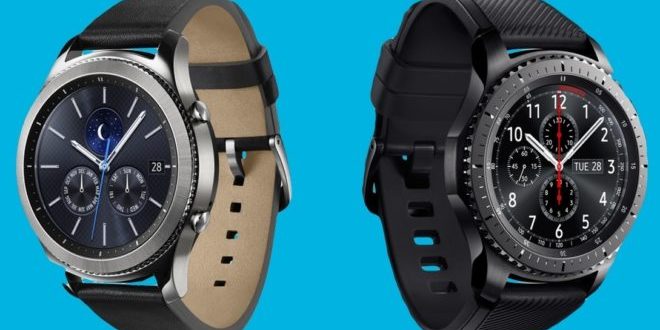Samsung Gear S3 pre-order have finally begun from November 4 and expected release date is November 18. Samsung Gear S3 was unveiled at IFA 2016 but was kept under wraps by Samsung until recently.
The starting price of both the Frontier and Classic is $349.99; however, that should not come as much of a surprise to most as Best Buy did reveal the prices when it posted listings for the two wearables.
However, any certain details about the price of the wearable were not made clear, as it will depend mostly on the carrier. AT&T offers the wearable for $49.99 with a two-year contract when purchased on the AT&T Next Every Year or AT&T Next plan with a Galaxy smartphone. In addition, the carrier is putting the wearable up for grabs for $17.50 a month for 20 months.
Gary Riding, senior vice president of product marketing for Samsung America, says customers are increasingly recognizing the advantages of a smartwatch that operates even without their smartphone.
“With the LTE capability of Gear S3, it is easy to make or receive phone calls and read or reply to texts and notifications, so they can stay connected while leaving their phone behind.”
Difference between the Frontier and Classic
The Samsung Gear S3 Classic and Frontier are designed to cater to everyone’s needs and are quite an impressive improvement from the last Gear (Gear S2) lineup. No other smartwatch has brought the MST technology to the market, but these wearables do. This means that they will have built-in Samsung Pay support, notes Techtimes.
The smartwatch packs a heart rate sensor, speedometer, barometer and an altimeter. In the Tizen store, the user gets an access to around 10,000 apps. The wearable performs several functions like setting timers and alarms, reading messages, calling facilities, adjusting volume, etc.
With the release nearing, the most interesting question about the Gear S3 may be the difference between the Frontier and Classic. According to CNET, customers can choose the Samsung Gear S3 Frontier for a more rugged look and Classic version for a formal look. That is the most obvious difference between the two wearables; however, the former has an advantage over the latter, as it has an option that comes with LTE support, notes Techtimes.
In addition, it should be mentioned that the LTE support option was somewhat already anticipated on the Gear S3 Frontier because it does appear geared towards those who spend most of their time outdoors. The LTE support could be useful in emergencies. The two wearables are more or less the same, other than those factors. Both of them run on the Tizen-based wearable operating system and have 1.3-inch display topped off with Gorilla Glass SR+ to avoid scratches.
Agencies/Canadajournal
 Canada Journal – News of the World Articles and videos to bring you the biggest Canadian news stories from across the country every day
Canada Journal – News of the World Articles and videos to bring you the biggest Canadian news stories from across the country every day



